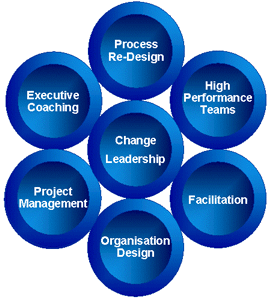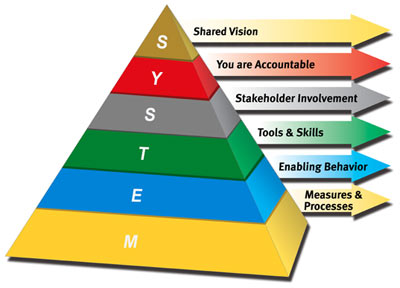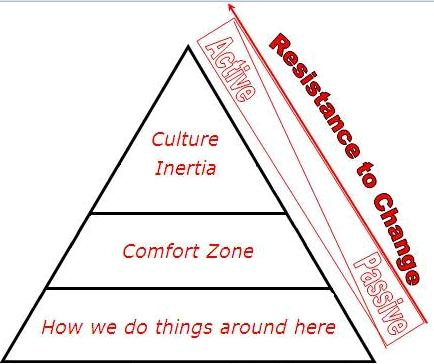Introduction
“How you define and exercise leadership in the present climate will be a significant determinant in your organization’s fortunes” (Warilow 2010, p. 1). The above statement was made with the intention of explaining the importance of good leadership in the organization. Today’s business environment stresses the importance of leadership because the business environment is more dynamic, fast-paced and unpredictable than ever before. Change is therefore an inevitable component for today’s businesses (Drucker 2004). However, successful change in the organization can only be sustained through change leadership. Change leadership involves the dissemination of organizational vision, the introduction of new ways to manage conflict and the determination of new ways to manage the resistance to change within the organization. Experts have noted that the above skills can determine if the transition into change leadership will be successful or not (Wagner 2010). The most fundamental perception of change leadership involves having a clearly defined direction (of where one intends to go), knowing important stakeholders, communicating with the stakeholders, and knowing how to manage different levels of support (or opposition to change) within the organization (Drucker 2008, p. 1). The following diagram shows this relationship

This paper analyzes the concept of change leadership through the perspective of Peter Drucker. Explicitly, this paper explains the reasons for the emergence of the theory and what leadership gaps the theory addressed. Different aspects of the theory will also be addressed, including the main characteristics of the new approach, its managerial implications, the existent pros and cons, related theories, contradictory theories and the future implications of the theory.
Reasons for the Emergence of the Theory
Change leadership has evolved into an important discipline of management because of its importance in management. Already, it is known that change is probably the only constant thing in management and in the running of organizational activities (Warilow 2010, p. 1). The diagram below shows how change leadership is central to the running of organizational activities.

From the above diagram, the importance of change leadership cannot be underestimated because change leadership influences process redesign, the success (or failure) of high-performance teams, facilitation of organizational goals, organizational design, project management and executive coaching. These areas of organizational performance are central to the functioning of everyday businesses. From this understanding, it is important for a leader to be change-oriented. From a global point of view, it is established that a leader needs to accommodate varied group perspectives and ensure such dynamics work towards the realization of group objectives. Similarly, leaders are required to manage the huge volumes of information that characterize the business environment today. These dynamics call for proper change management but most importantly, they seek to find effective change leaders (Warilow 2010, p. 1).
From the above understanding, it is crucial to point out that, from the rapid changes characterizing the business world, there has been a gap in change leadership. Most previously existing theories were focused on highlighting managerial competencies that were needed during different periods of organizational transition. There were not any theories that effectively addressed the leadership gaps that existed in change management. Most importantly, it is crucial to highlight that change management and change leadership are different concepts. Since there was more focus on leadership as opposed to management, change leadership filled this vacuum.
Main Characteristics of the New Approach
One characteristic of change leadership is action orientation (Clay 2010, p. 1). Change leadership is not only limited to the fact that people should be receptive to learning because it also stresses the importance of using the learned knowledge to initiate action. Another characteristic of the change leadership approach is risk tolerance. Risk is a common characteristic of organizational activities. Risk is even more prominent for organizations that intend to change their traditional ways of doing things. Having a common vision and upholding accountability are also important aspects of change leadership, which most change leaders are required to uphold. The concepts of common vision and accountability are normally expected to be shared by all the stakeholders in the organization. However, the change leadership approach also recognizes that effective transformational change can only be achieved by using appropriate tools and skills. The proper application of these tools and skills is expected to amount to a desirable behavior in the organization. The desirability of the new behavior in the organization is also expected to be measured using different benchmarks and processes. The following diagram explains these characteristics of change leadership.

Managerial Implications
Change leadership has an influence on the management of an organization. One aspect of organizational management which is common for most organizations is problem-solving (Orridge 2009). Change leadership facilitates the achievement of desired results in problem-solving because most change leadership approaches, which are adopted in the organization are aimed at solving specific organizational problems. Change leadership also helps to cultivate good leaders and employees in the organization because change leadership requires the subjects to have a broad range of skills such as political skills, analytical skills, and people skills which are crucial in the achievement of a holistic perspective of change analysis (Orridge 2009). The above advantages are depicted in the holistic perception of change leadership (which influences the organizational vision, process model and the transition path to the realization of effective change). For example, according to the diagram below, the influence of change leadership in realizing desirable problem-solving outcomes is explained by the “strategy” arrow, which links open leadership and transition path. In this regard, problem-solving leads to the derivation of successful strategies for organizational development. The cultivation of good leaders is also explained in the general framework of change leadership because good change leaders are supposed to have the necessary foresight of realizing a desirable organizational image for the future. According to the diagram below, successful change leaders are supposed to have a good conceptualization of external trends, internal ambitions and the framework for undertaking innovative projects. According to this analysis, change leaders are equipped with a broad range of skills such as political skills, analytical skills, and people skills, which are discussed above.

The above analogy shows that change leadership is pivotal in reacting to the internal and external forces of an organization (which intends to institute change).
Related Theories and Concepts
Change leadership is not a new concept of management; there have been other existing theories and concepts, which address similar issues that the theory does. For instance, the concept of change management has been synonymously used in the context of change leadership. In fact, some authors such as Kotter (2011) perceive change leadership as a better term for change management. In reference to this assertion, Cocklereece (2011) explains that “The term may communicate the vision of a leader reacting to change and since change is constant, the leader and his team may alter their course of managing change daily” (p. 2). The concepts of change management and change leadership, therefore, have many similarities except for the fact that change management focuses on managers while change leadership focuses on leaders (Cocklereece 2011).
Transformational leadership is also another concept that is closely related to the concept of change leadership. Transformational leadership however focuses on the different mechanisms that ensure employees uphold moral and high performance in the organization while the change process takes place (Bass 1998). Mentorship is one such tool for ensuring effective transformational leadership occurs because Kotter (2011) equates the process of transformational leadership to being a role model to the followers, such that, they feel inspired to act as the mentor. Transformational leadership also inculcates a culture of ownership and accountability for employees (in the organizational context) because the main goal of transformational leadership is to align the employee tasks with the performance of the organization (Bass 1998).
The relation between change management and transformational leadership stems from the commonality in addressing change. Transformational leadership focuses on the mechanics of change while change leadership focuses on the ultimate vision of undertaking the change process in the first place. Transformational leadership is therefore subject to change leadership because, from a broader point of view, it is a tool used by change leaders in effecting change. Transformational leadership and change management are therefore related and compatible approaches to change leadership (Bass 1998).
Contradictory Approaches
The main contradictory approach to the change leadership model is the bureaucracy approach to management. The bureaucracy approach to management is contradictory to the change leadership approach because it is against change. This approach was introduced by Max Weber (a German sociologist) who proposed that things should be done in a structured manner (in the organization) to control resources better and assist in achieving better decision-making outcomes (Dolan 2003, p. 8). There are several aspects of organizational management that the bureaucracy approach proposes which leave very little room for change in the organization. For instance, the bureaucracy approach proposes the division of fixed labor, hierarchy of offices, having a rational-legal authority and the creation of rules to govern performance as some of the main pointers of effective organizational performance (Dolan 2003, p. 8). These managerial components have very little room for change because they prefer a traditional approach to leadership and management. This traditional approach is normally supported by existing inhibitions to change such as cultural inertia, comfort zone, and the conventional way of running the organization. In fact, the bureaucratic approach to management is very strong in some organizations and institutions (such as governments) such that it has almost become the existing organizational culture of such organizations. Since this management philosophy has been widely adopted by many organizations, it has created a “comfort bubble”, which is resistant to change leadership. The following diagram explains this scenario.

Advantages and Disadvantages
Change leadership poses different advantages and disadvantages to organizations that apply them. For instance, it is known that employees who work under effective change leaders are better at problem-solving than employees who do not experience effective change leadership (Kalyani 2011, p. 1). A sudden change in the normal processes or procedures in the organization is likely to be better handled by change leaders than other types of leaders. The same concept applies to employees who are subject to effective change leaders. It is therefore easy to oversee change in the organization by engaging change leaders. This aspect of change management is especially important in today’s business world, which is characterized by rapid competition and change. From a practical point of view, change leaders ensure smooth transitions between different organizational states. More so, there is a strong sense of continuity, which is guaranteed by change leaders (Kalyani 2011, p. 1).
Employee cohesion is also easily realized through change-oriented leadership because change leaders are better listeners to employee grievances and they are better equipped to manage worker inputs (Drucker 2004). For instance, change-oriented leaders are better at facilitating the introduction of new working methodologies in the achievement of new goals. For instance, if workers identify a new opportunity in the organization, change-oriented leaders are likely to try out new approaches to achieve the newly desired levels of performance.
Finally, to sum the advantages of change leadership, we can identify that change-oriented leaders introduce a lot of flexibility in organizational processes. For instance, change-oriented leaders have a higher likelihood of quickly changing the organizational processes to meet new product and service demands of the market (Drucker 2004). This is an essential component of organizational operations because it is easier to meet new organizational demands in flexible environments.
Like other leadership theories, change management has its disadvantages too. The disadvantages of change-oriented leadership are however unique because change-oriented leadership is meant to improve organizational performance and make them meet the demands of present and future organizational needs. One such disadvantage is the risk of confusing the employees when the organization makes frequent policy and practice changes. Change-oriented leadership is known to introduce new changes to the organization frequently (Aitken 2009, p. 1). If these changes are not properly explained to the employees, they may be disillusioned and frustrated by such changes. These changes are especially risky to the organization because people are naturally opposed to change.
Change-oriented leadership is also difficult to implement in large organizations, which are characterized by extensive group activities, which have intertwined goals. The application of change oriented-leadership may undermine the performance of such groups because a drastic change in one business aspect may interfere with the activities of another business aspect, thereby creating a lot of inconvenience on the organization (Drucker 2004). Effective change leadership, therefore, requires a holistic foresight of the organization’s activities so that when change is instituted in one area of business, it does not affect another.
Conclusion
After weighing the findings of this study, we can see that change leadership facilitates the realization of new processes and procedures in the organization. Like other theories of management change leadership has its advantages and disadvantages but undoubtedly, we have affirmed that change leadership is an important philosophy of coping with the changes of the 21st-century business world. From this understanding, it is crucial to point out that change leadership is set to have a strong impact on the future leadership and management of organizations. This may be realized through the recruitment and selection of future leaders and managers (or normal employees) because organizations will be looking to recruit people with qualities of effective change leaders. Finally, going forward, business and revenue growth will be determined by how effective organizations implement change leadership. The performance of change leadership processes will therefore be a benchmark for the success of organizations. Based on this understanding, it will therefore be interesting to see how much influence leadership will have on the overall performance of an organization. Will it be the ultimate determinant of organizational success?
References
Aitken, P. (2009) Developing Change Leaders: The Principles and Practices of Change Leadership Development. London, Routledge.
Bass, B. (1998) Transformational leadership: industrial, military, and educational impact. London, Routledge.
Clay, B. (2010) Six Characteristics of Highly Effective Change Leaders. Web.
Cocklereece, T. (2011) Change Leadership. Web.
Dolan, J. (2003) Representative bureaucracy: classic readings and continuing controversies. New York, M.E. Sharpe.
Drucker, P. (2004) Managing the Non-Profit Organization. London, Taylor & Francis.
Drucker, P. (2008) The Five Most Important Questions You Will Ever Ask About Your Organization. London, John Wiley & Sons.
Kalyani, A. (2011) What Are the Advantages & Disadvantages of Change-Oriented Leadership?
Kotter, J. (2011) Change Management vs. Change Leadership — What’s the Difference?
Orridge, M. (2009) Change leadership: developing a change-adept organization. London, Gower Publishing, Ltd.
Wagner, T. (2010) Change Leadership: A Practical Guide to Transforming Our Schools. London, John Wiley and Sons.
Warilow, S. (2010) Change Leadership: how defining leadership can shape change management. Web.